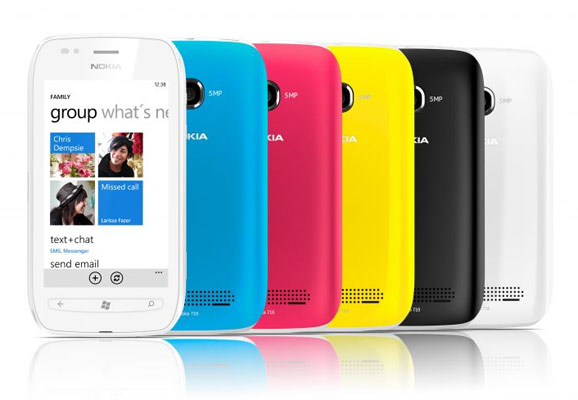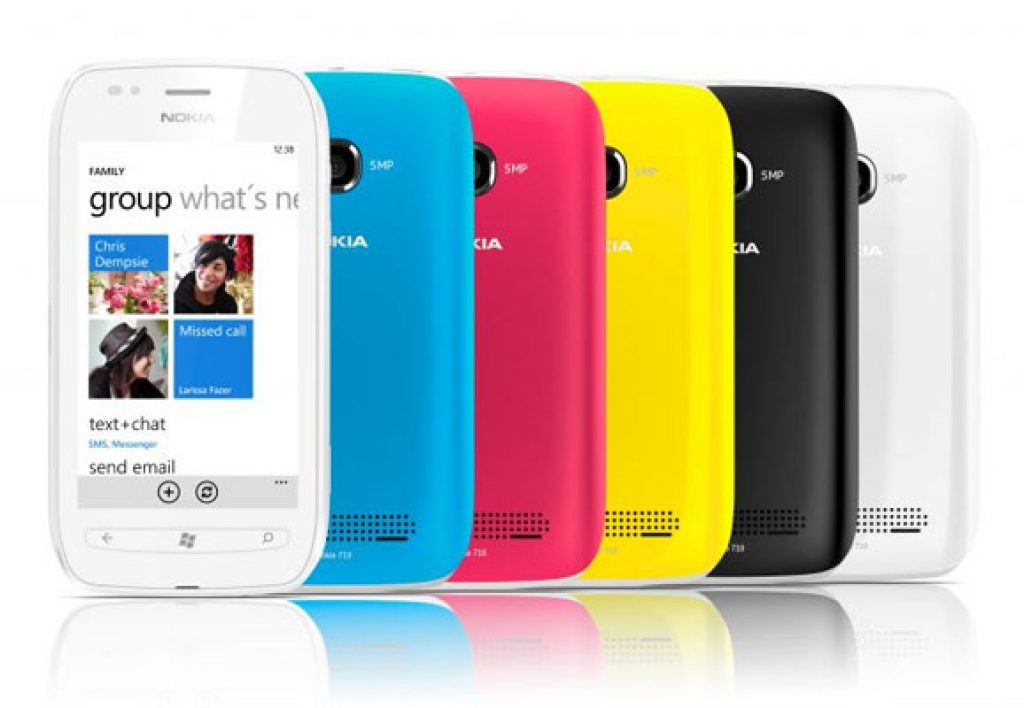Having recently discussed the embedded vision applicability of latest-generation smartphones based both on Apple's iOS (the iPhone 4S) and Google's Android (the Samsung Galaxy Nexus), it's appropriate to also give Microsoft's Windows Phone (formerly Windows Mobile, all based on Windows CE) O/S a turn in the spotlight. Latest version 7.5, aka "Mango", is now shipping on both new and upgraded handsets, and it also forms the basis of Nokia's first two Microsoft-powered devices, the Lumia 710 and 800:

The higher-end Lumia 800 is shown at the top of this writeup, whereas the more mainstream 710 is directly above this paragraph. The form factors are obviously different; the Lumia 800 is 4.6 x 2.4 x 0.47 inches and weighs 5 ounces, while the Lumia 710 has dimensions of 4.6 x 2.4 x 0.5 inches and weighs 4.4 ounces. Varying battery capacities (1450 mAh for the 800, 1300 mAh for the 710) explain at least some of the weight variance.
The Lumia 800's physical design is inspired by the recently introduced and short-lived Nokia N9 (based on the now-defunct MeeGo O/S), although the internals are different; the N9 used a 1 Ghz Texas Instruments OMAP 3 SoC, for example, while the Lumia 800 upgrades to a 1.4 GHz single-core Qualcomm Snapdragon. But spec-wise the Lumia 800 and 710 are surprisingly similar, in spite of the price differential between them (420 Euros for the 809, roughly $580, versus 270 Euros for the 710).
Both phones use the earlier mentioned 1.4 GHz Qualcomm MSM8255 SoC. They both harness a 3.7" color display (OLED for the 800, LCD for the 710). They both contain 512 MBytes of RAM; the 800 couples it to 16 GBytes of NAND flash memory, while the 710 offers half that amount of embedded nonvolatile storage (albeit without, in both cases, any MicroSD card expansion capabilitiies). And the devices' respective connectivity suites are also identical; 802.11n b/g/n (2.4 GHz), Bluetooth 2.1+EDR, and USB 2.0.
But focus in (pun intended) on the rear-facing optics, and a key difference becomes immediately apparent. The Lumia 800 clones the still camera of its N9 predecessor; an 8 Mpixel sensor coupled with a Carl Zeiss lens assembly. The Lumia 710, on the other hand, makes due with un-branded optics and a 5 Mpixel sensor. With that said, both smartphones embed a LED flash, and the maximum captured video resolution in both cases (likely constrained by the common single-core CPU's performance limitations) is 720p at 30 fps.


